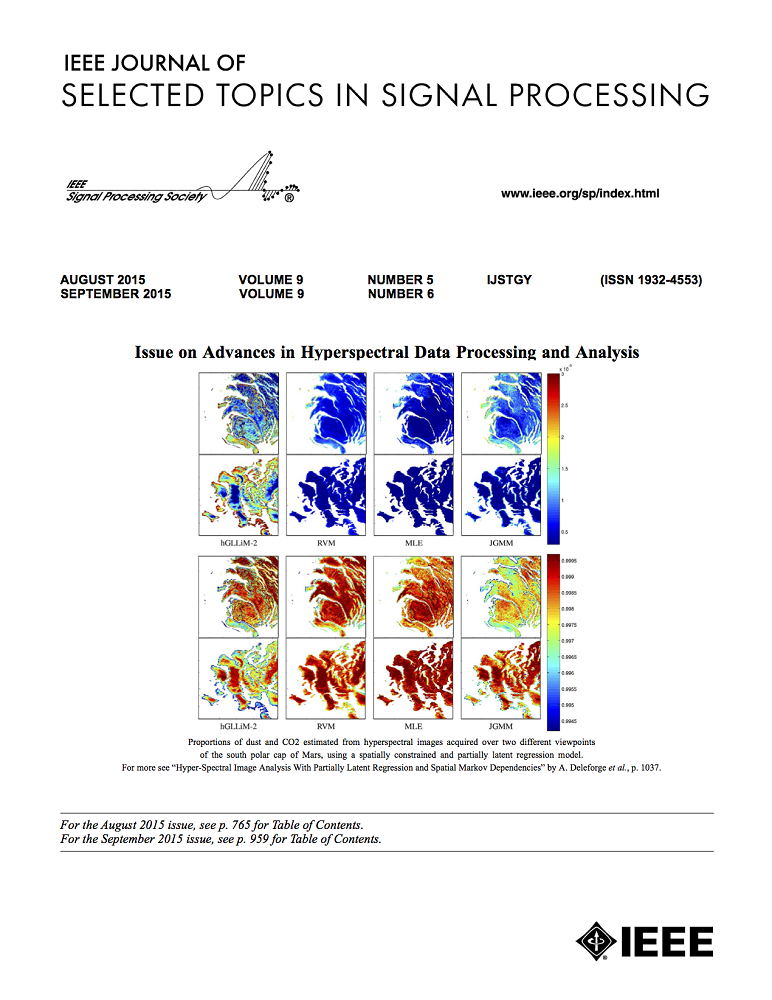用于太赫兹频率6G系统的无线电SLAM:设计和实验验证
IF 8.7
1区 工程技术
Q1 ENGINEERING, ELECTRICAL & ELECTRONIC
IEEE Journal of Selected Topics in Signal Processing
Pub Date : 2023-06-12
DOI:10.1109/JSTSP.2023.3285101
引用次数: 1
摘要
下一代无线网络将实现通信和传感的融合,同时利用太赫兹频谱中的大带宽和手持设备上的大型天线阵列的可用性。特别地,设想用户设备将能够通过操纵非常窄的天线波束并收集由物体和墙壁反射的回波来自动扫描其周围环境。这些数据将用于导出周围室内环境的地图,并使用同时定位和映射(SLAM)技术推断用户的轨迹。在本文中,我们通过提出源自图像处理技术的原始无线电SLAM(R-SLAM)算法来解决这种情况,以从移动太赫兹雷达感测到的测量值开始绘制环境地图并精确定位地图中的设备位置。最初,为了充分理解太赫兹背散射现象,我们提供了室内环境中太赫兹背散射通道的实验表征。然后,使用真实世界的太赫兹雷达测量值评估了所提出算法的性能,并与最先进的SLAM技术进行了比较,证明了所提出方法的优越性。本文章由计算机程序翻译,如有差异,请以英文原文为准。
Radio SLAM for 6G Systems at THz Frequencies: Design and Experimental Validation
Next-generation wireless networks will see the convergence of communication and sensing, also exploiting the availability of large bandwidths in the THz spectrum and electrically large antenna arrays on handheld devices. In particular, it is envisaged that user devices will be able to automatically scan their surroundings by steering a very narrow antenna beam and collecting echoes reflected by objects and walls. These data will be utilized to derive a map of the surrounding indoor environment and infer users' trajectories using simultaneous localization and mapping (SLAM) techniques. In this article, we address this scenario by proposing original radio-SLAM (R-SLAM) algorithms, derived from image processing techniques, to map the environment and pinpoint the device position in the map starting from measurements sensed by a mobile THz radar. Initially, to fully understand the THz backscattering phenomenon, we provide an experimental characterization of the THz backscattering channel in indoor environments. Then, the performance of the proposed algorithms is assessed using real-world THz radar measurements and is compared with state-of-the-art SLAM techniques, demonstrating the superiority of the proposed approaches.
求助全文
通过发布文献求助,成功后即可免费获取论文全文。
去求助
来源期刊

IEEE Journal of Selected Topics in Signal Processing
工程技术-工程:电子与电气
CiteScore
19.00
自引率
1.30%
发文量
135
审稿时长
3 months
期刊介绍:
The IEEE Journal of Selected Topics in Signal Processing (JSTSP) focuses on the Field of Interest of the IEEE Signal Processing Society, which encompasses the theory and application of various signal processing techniques. These techniques include filtering, coding, transmitting, estimating, detecting, analyzing, recognizing, synthesizing, recording, and reproducing signals using digital or analog devices. The term "signal" covers a wide range of data types, including audio, video, speech, image, communication, geophysical, sonar, radar, medical, musical, and others.
The journal format allows for in-depth exploration of signal processing topics, enabling the Society to cover both established and emerging areas. This includes interdisciplinary fields such as biomedical engineering and language processing, as well as areas not traditionally associated with engineering.
 求助内容:
求助内容: 应助结果提醒方式:
应助结果提醒方式:


